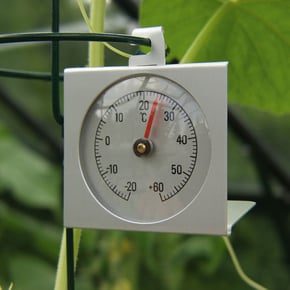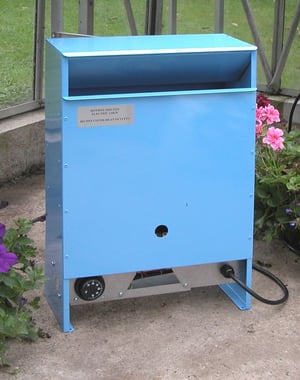The Best Way to Insulate a Greenhouse
Written by John Harrison on 10th Sep 2015.

The first thing to decide is how much of your greenhouse you want to keep warm and so need to insulate. Usually a greenhouse starts to fill when the weather is warming in spring and in the cold of winter it's probably just overwintering some tender perennials and getting an early start on some seedlings so not needing all the available space.
Greenhouse Insulation Material
The standard and best material for insulating your greenhouse is simply bubble plastic. Bubble plastic can be obtained with various sizes of bubble, the 20 mm large bubbles are best as they allow more light through and are better at retaining heat. Each bubble holds air which means the sheeting works in a similar way to double glazing.
Correctly applied bubble wrap will also cut down on draughts which suck out the warm air.
Horticultural Bubble Wrap Insulation

You are best buying purpose made horticultural bubble wrap rather than packaging wrap. The horticultural bubble wrap is tougher and UV stabilised and will last longer, at least three years.
Decide how you are going to insulate and measure up so you know how much insulation to buy. Allow some extra for overlaps and wastage, 10% extra should be about right.
How to Install the Insulation
If you, for example, decide you need half the house insulated drape a curtain of bubble plastic from side to side. You are best to insulate the half furthest from the door so a cold blast of air won't enter the warm area when you enter the greenhouse on a winter's day. Use two pieces of wrap, one to the left and one to the right with an overlap in the centre to form a doorway to the warm area.
For an aluminium greenhouse you can buy special clips to hold the bubble wrap. These clip into the channels on the glazing bars and then onto the bubble wrap. For wooden greenhouses drawing pins will suffice.
If you have a large greenhouse with excess space above head height, drape the bubble wrap from side to side to form a roof at a lower level. This again reduces the volume you have to heat.
Otherwise, start from the ridge apex and work down to the vertical glazing bars. Then fix the insulation to the vertical faces.
Useful Additions
A maximum-minimum Greenhouse Thermometer is useful so you can check how the insulation is working for you. A hygrometer is also very useful to warn you when the house is becoming too humid and requires ventilation. Too humid an atmosphere will encourage fungal diseases such as botrytis.
Temperatures for the Winter Greenhouse

To keep your greenhouse frost free you need to ensure the temperature stays at 2 degrees C or above. Most tender plants such as citrus fruit trees, half-hardy fuchsias and pelargoniums (geraniums) require a warmer temperature, around 7 degrees C. If you are raising plug plants for an early show or spring hanging basket, a slightly higher 10 degrees C is preferable.
Very tender tropical plants usually grown in a conservatory or in the house will need a minimum 13 degrees C. Incidentally many cacti are tolerant to low temperatures since deserts can get surprisingly cold at night.
Take Care with Heaters
Be very careful where you position Greenhouse Heaters and that the bubble wrap is firmly fixed as if it falls onto a heater it presents a fire hazard.
With paraffin and gas heaters, remember they produce a moist heat and require airflow for correct operation so avoid blocking all the vents. With electric fan heaters, place carefully so that nearby plants are not scorched.
Copyright © John Harrison 2015